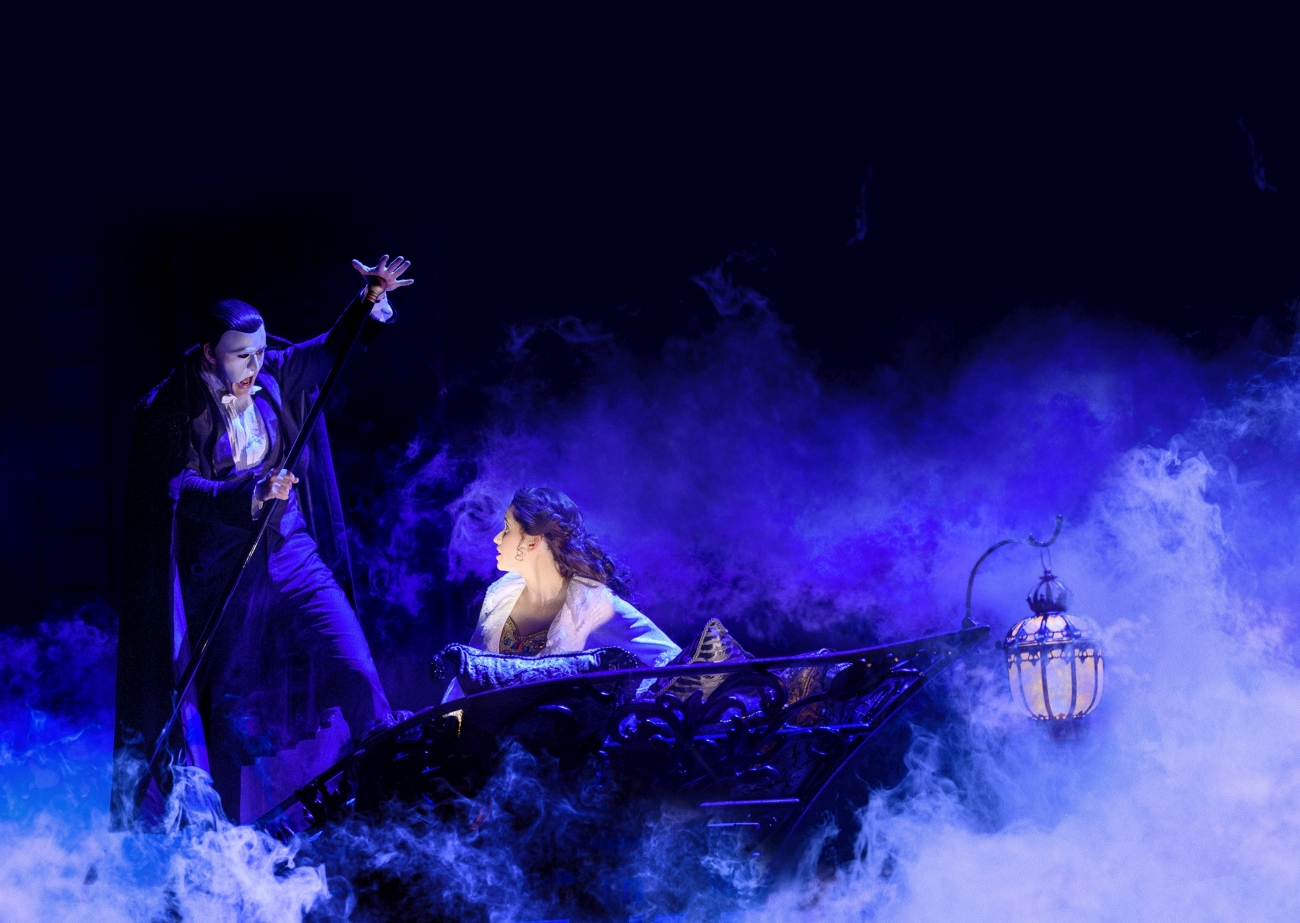The Raimund Theater: A Legendary Venue for Musicals in Vienna
Vienna boasts a magnificent theatre dedicated exclusively to musicals: the Raimund Theater. Numerous productions have graced its stage, and the mini-boutiques within offer audio and video recordings of these shows. This venue is a haven for musical theatre enthusiasts, comparable to the West End in London or Broadway in New York. It is a theatre where productions often run for months, if not years.
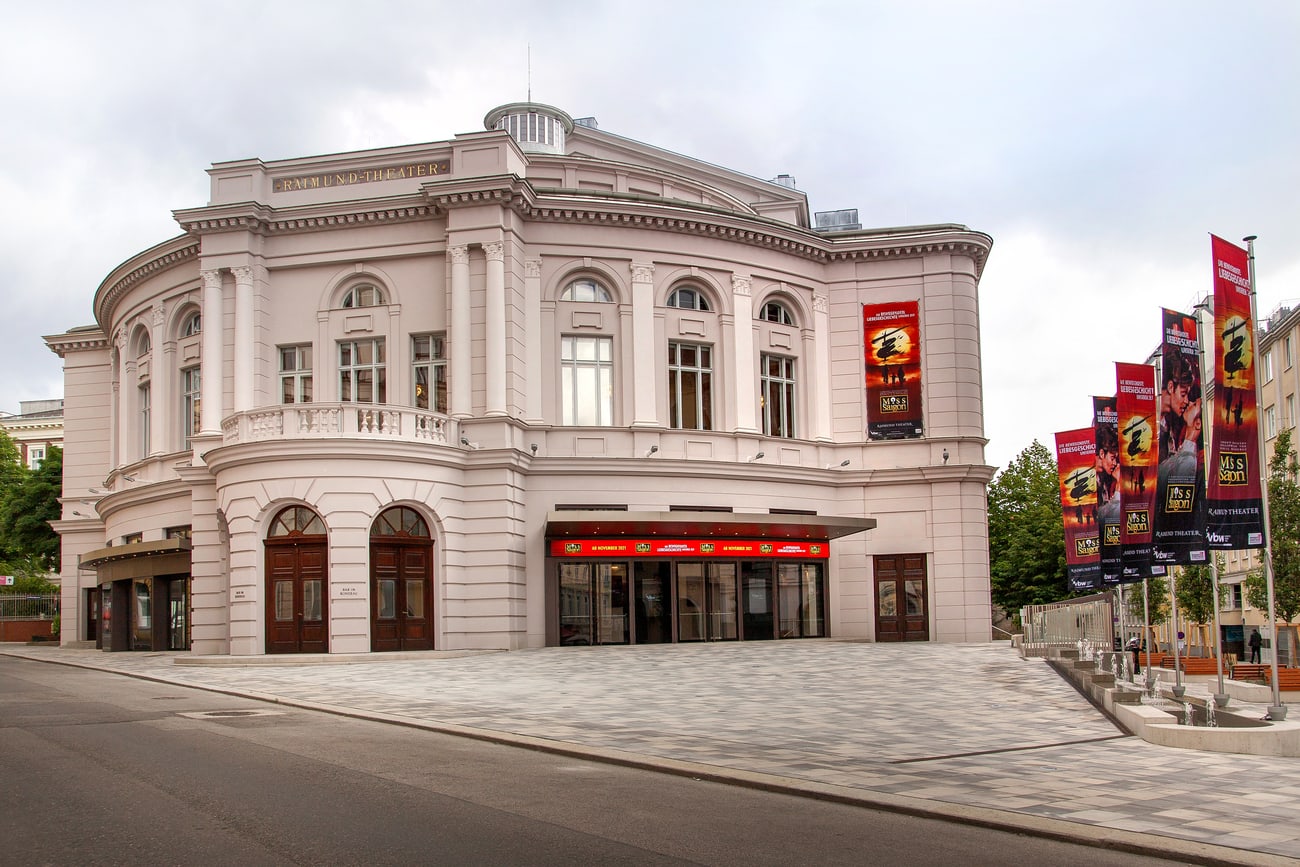
Inaugurated on 28 November 1893 and initially focusing on spoken theatre, it wasn’t until 1908 that operetta made its debut here, achieving such success that some performances ran for several months. Operettas then dominated the programme, featuring works by Johann Strauss and Robert Stolz, including Das Glücksmädel (The Lucky Girl), premiered here in 1910. Other composers also shared the theatre’s bill. One of the most significant successes of that period, Das Dreimäderlhaus (The House of Three Young Girls) with music by Franz Schubert, had over 1,200 performances between 1916 and 1927.
In 1976, the era of musicals began at the Raimund Theater, including Lady in the Dark by Kurt Weill. The theatre was completely renovated in 1984/85 and since 1987 has hosted numerous major musical productions, including some world premieres. These include A Chorus Line, Les Misérables, Phantom of the Opera, Beauty and the Beast, The Vampire Ball, Hair, Joseph and the Amazing Technicolor Dreamcoat, Wake Up, Barbarella, Romeo and Juliet, Rebecca, We Will Rock You, Mayerling, I’ve Never Been to New York, Elisabeth, Mamma Mia, Mozart!, Shikaneder, and I Am from Austria. In 2019, the Raimund Theater underwent further renovation and modernisation. The 2021/22 season opened with the touching worldwide musical success, Miss Saigon, produced by Cameron Mackintosh, in the renovated theatre.
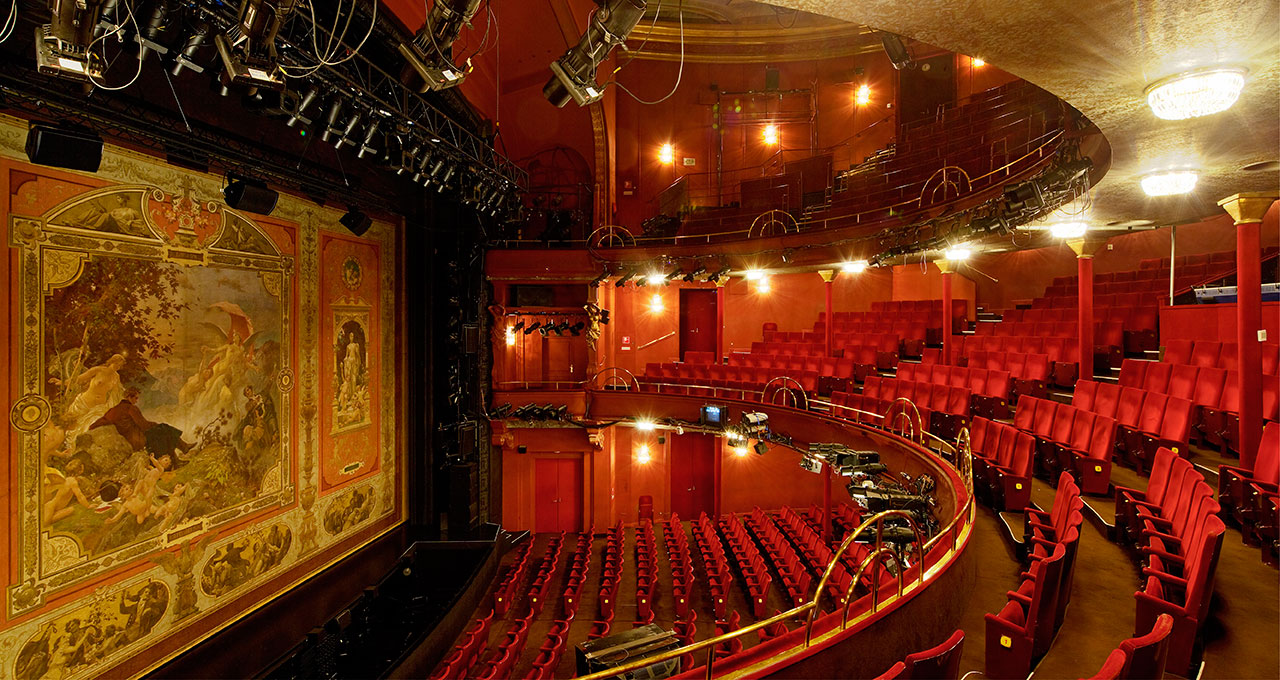
A vast parterre and two large balconies welcome an audience that, in this country, is fond of music and appreciates all genres! (Let’s not forget the great Viennese composers, including Johann Strauss and Franz Lehár!) We might have been extremely surprised by the quality of a show that in its genre raises the standard of music and dramatic interpretation as high as that of the Staatsoper or the Volksoper if our two-decade-long peregrinations in Austria had not taught us that operetta and musical comedy are veritable “institutions” in this country, elevated to a level that is hard to imagine in France.
The Lavish New Production of Phantom of the Opera
The Phantom of the Opera has been running since March, with performances every day, including twice on Saturdays, in a schedule similar to London and New York theatres. Given that most performances are sold out, it’s clear that Phantom of the Opera has a long and prosperous future at the Raimund Theater. Particularly refreshing and heartwarming on the evening of 6 June was the large number of university students aged between 13 and 18 (who arrived in coachloads) attending the performance, with young boys in dark suits and young girls in evening dresses.
We have seen The Phantom of the Opera almost ten times at its original venue, His Majesty’s Theatre in London, where it has been performed for 38 years since its premiere in 1986. Comparing a work we know almost note for note was particularly exciting that evening.
As mentioned earlier, the Raimund Theater is dedicated to musical theatre, meaning its facilities are perfectly suited to this particular style of show, which is difficult to present in other venues, such as unsuitable theatres or even, paradoxically, opera houses. Here, we are at the pinnacle of sound, lighting, set design, and special effects for this genre. The teams are naturally doubled or even tripled, for example, in the orchestra, to ensure the necessary alternation in a venue where performances are held daily. We counted around thirty musicians, double the number usually used for musicals. (The Orchester der Vereinigten Bühnen Wien is an 80-strong phalanx dedicated primarily to musicals.) Excellence is the norm with these experienced professionals specialising in the genre, led that evening by their principal conductor, Carsten Paap.
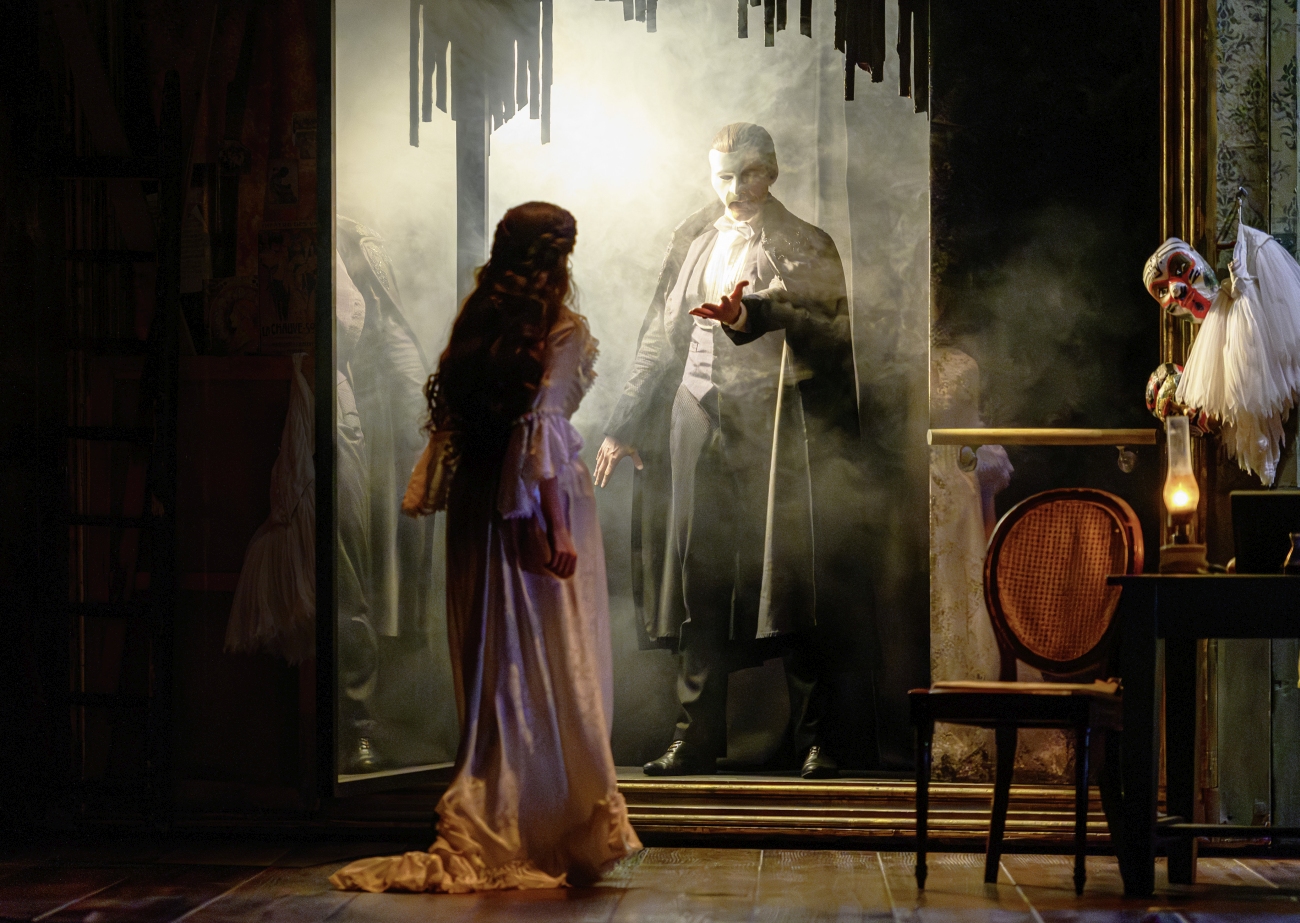
This new production of Phantom of the Opera is directed by Laurence Connor, a leading specialist in Anglo-American shows, known for his London staging of Les Misérables at the O2 Arena (Millennium Dome) in 2010 and Phantom of the Opera at the Royal Albert Hall in 2011, marking the 25th anniversaries of these two long-running musicals. (Production and staging supervisor on tour and in Vienna: Seth Sklar-Heyn.)
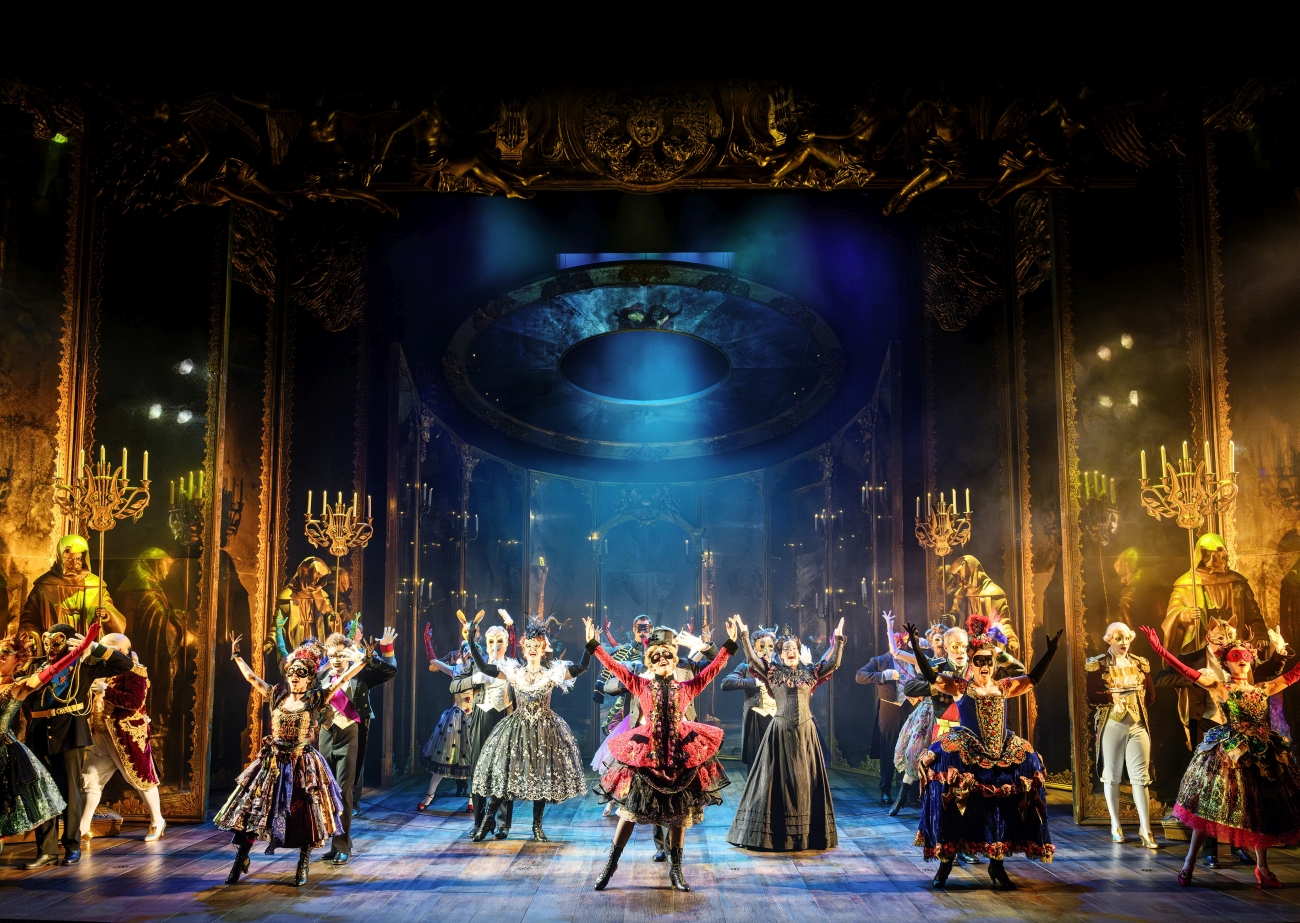
First, let’s pay a fitting tribute to Maria Björnson (who passed away in 2002), as the magnificent costumes are identical to those she designed for the original production. What absolute splendor! The costumes for the pastiche of the baroque opera-bouffe Il Muto, with its Louis XV finery and extravagant wigs, are particularly convincing. The rest of the production is also extremely evocative of the London production, with the rich costumes of the first act’s opera Hannibal and the second act’s Don Juan Triumphant (“The Point of No Return”).
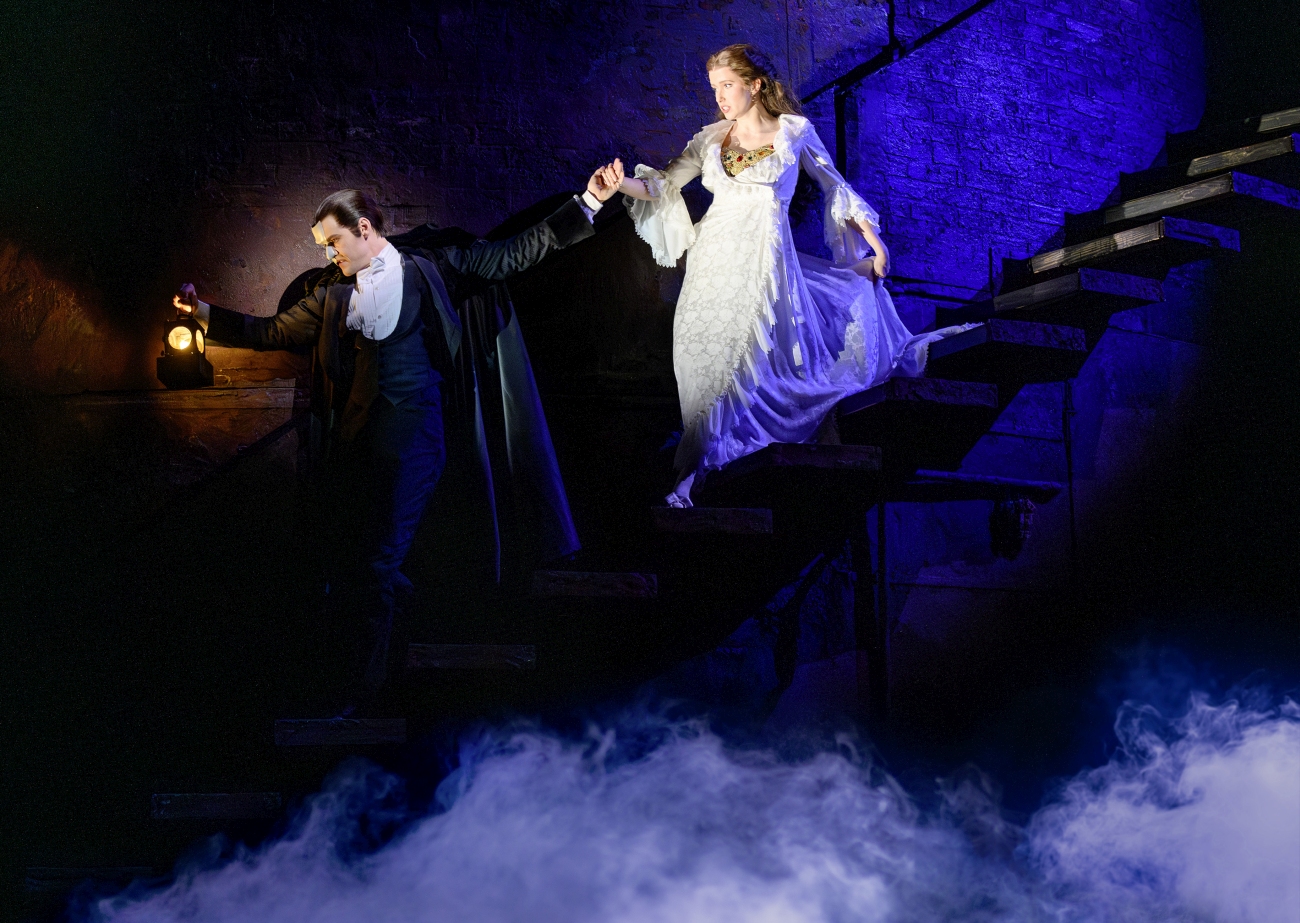
Regarding the set design by Paul Brown, how could we ignore the imposing chandelier, the emblematic symbol of this work, or the abundance of scenery ingeniously constructed around a revolving tower, allowing quick transitions between scenes. This tower features a circular balcony at the top, providing a second play area. For example, when the protagonists read the Phantom’s letters in the opera directors’ offices in the lower set, the Phantom can be seen in the upper plane reading his own missives, with his voice becoming that of the protagonists. A great idea also appears when Christine Daaé visits her father’s grave, transitioning smoothly from the rehearsal of Don Juan Triumphant in a church setting to the cemetery. When the Phantom leads Christine to the depths of the basement, they traverse retractable staircases before taking the boat to the hero’s hideout.
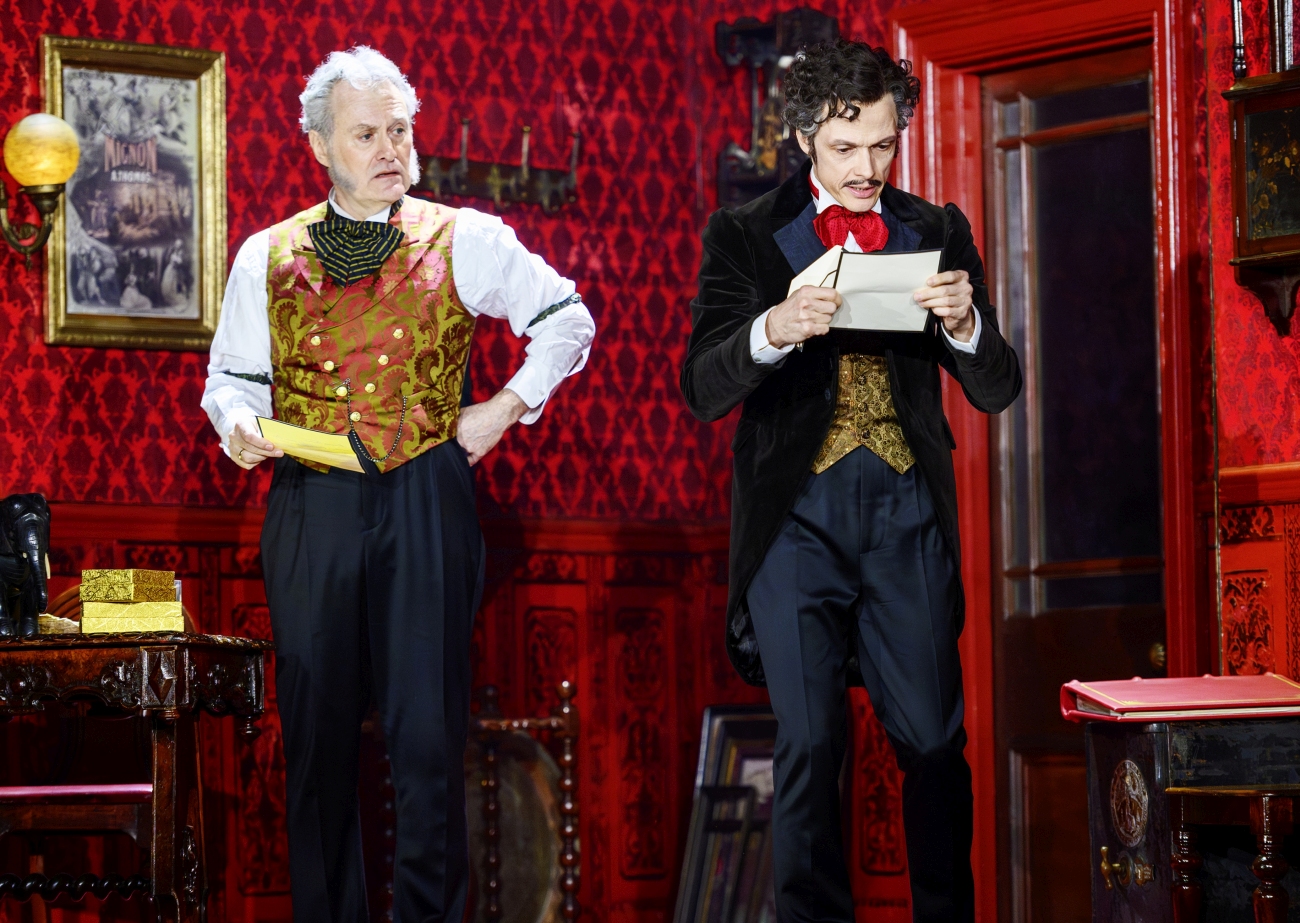
These rapidly sequenced scenes give the work cinematic fluidity. Additionally, the finely tuned choreographic interludes by Scott Ambler, such as the pastoral ballet preceding Bouquet’s hanging by the Phantom and “Masquerade,” which opens the second act, are also danced by the singer-actors. The set design, while not exactly copying the original production, retains its spirit and splendor. The extreme precision in directing the actors and the unprecedented commitment of each performer are awe-inspiring. Once again, we are only partially surprised, as we have often appreciated the high standard of Austrian productions, matching their English and American counterparts.
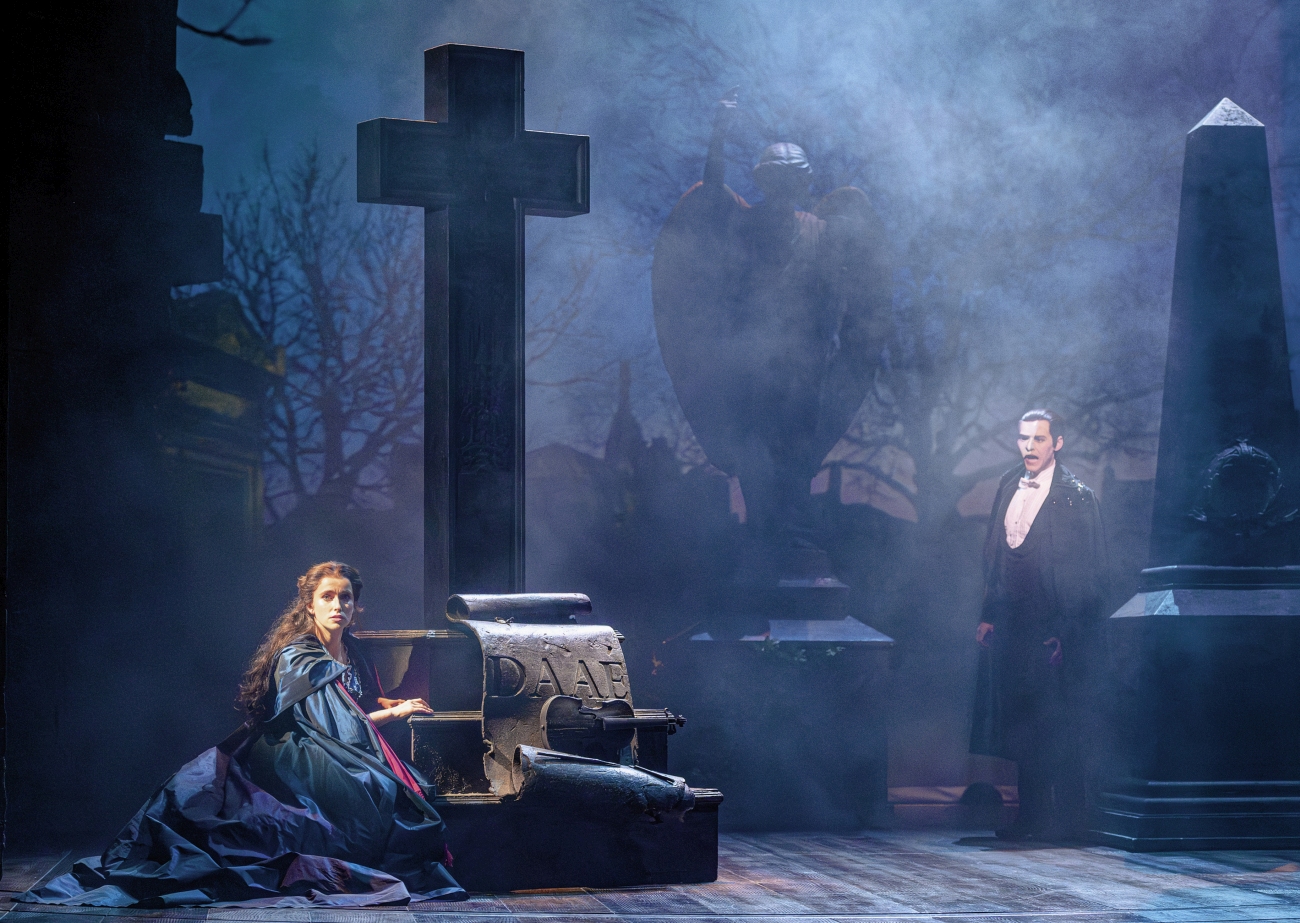
But how can we not mention the astounding trio of Phantom/Christine/Raoul? An absolute dream! In our opinion, it rivals the cast of the 25th anniversary performance, captured on video at the Royal Festival Hall in London. Anton Zetterholm’s Phantom is breathtaking both vocally and interpretatively, reaching the level set by Ramin Karimloo, who left his mark on the role.
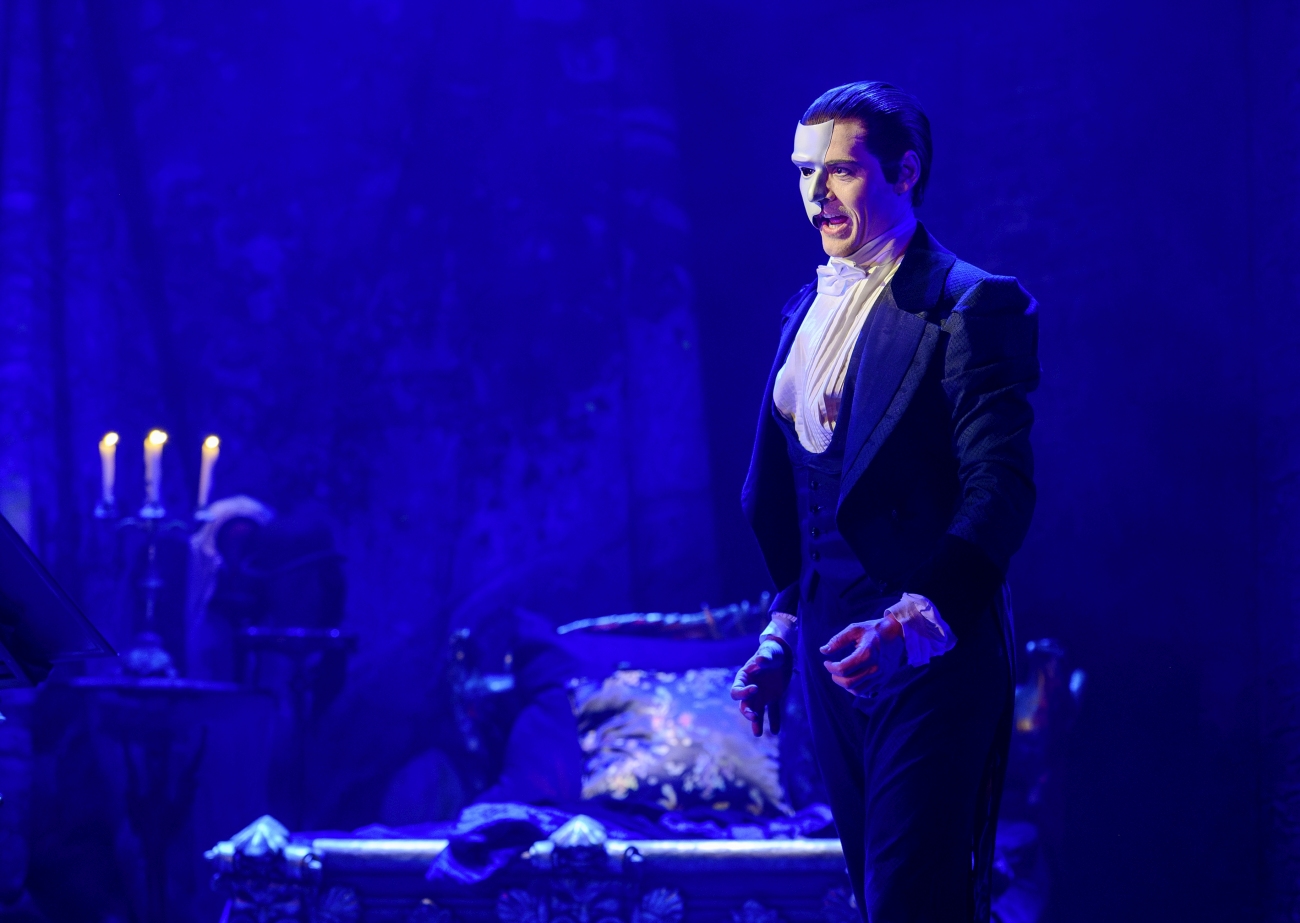
Zetterholm’s full, powerful voice and the absolute beauty of his timbre harmonise perfectly with Lisanne Clémence Veeneman’s, who masterfully handles the challenging role of Christine Daaé. She displays ease in high notes and aerial vocalisations, as well as a wide mid-range voice, particularly in the low notes, which some performers of the role lack. This range is necessary to do justice to the magnificent aria, one of the score’s highlights in the cemetery scene, “Wishing You Were Somehow Here Again.” The duet at the end of Act I, “All I Ask of You,” on the roof of the Paris Opéra is equally breathtaking, with Lisanne Clémence Veeneman and Roy Goldman (ideal as Raoul de Chagny) being as glamorous as they are moving.
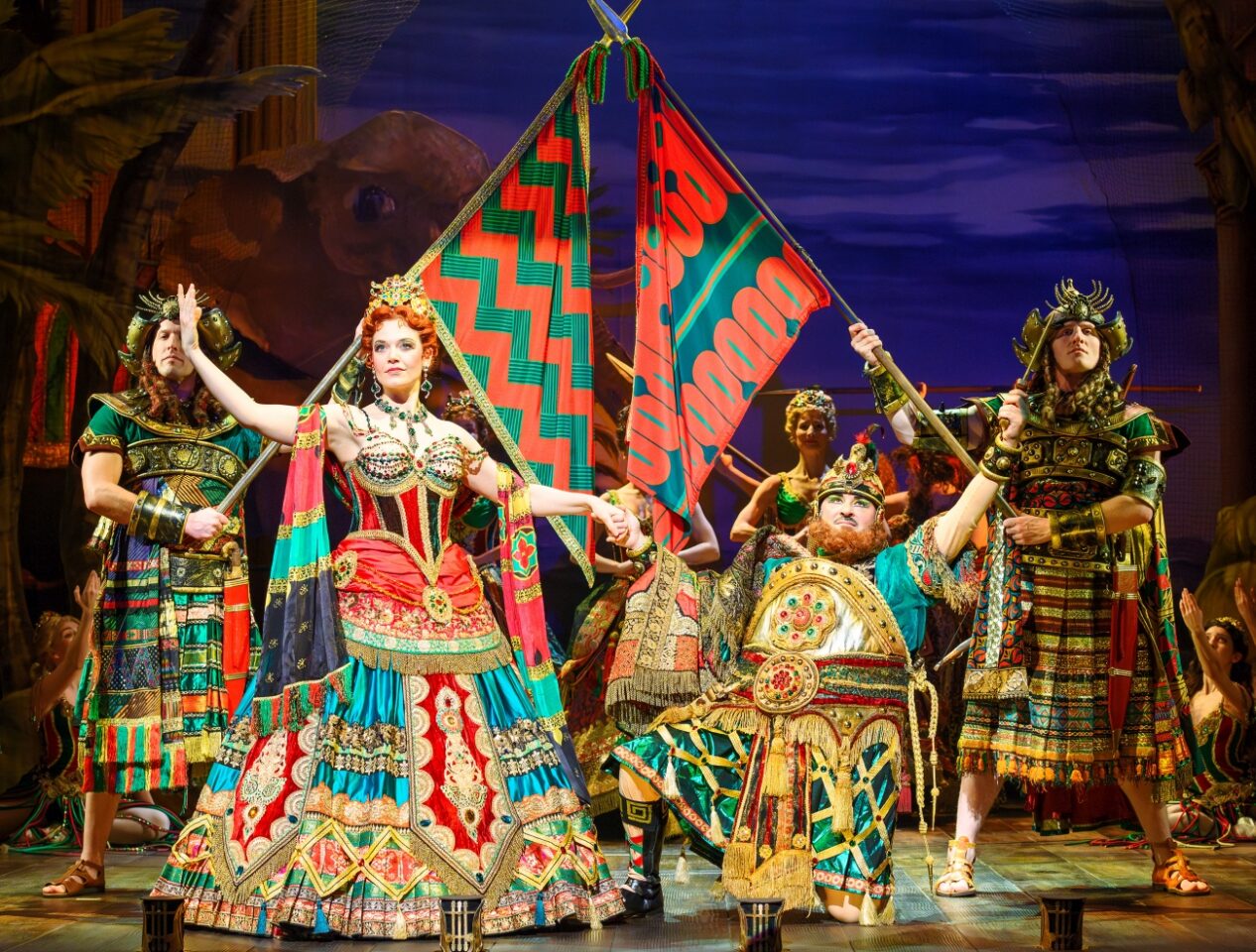
The Phantom of the Opera requires brilliant supporting partners, and we are particularly well-served by three performers we know well: Patricia Nessy (Madame Giry), already appreciated at the Bad Ischl Festival in Paul Lincke’s Frau Luna and Carl Zeller’s Der Vogelhandler; Milica Jovanović (Carlotta Giudicelli), who was an admirable Anna in The King and I at the Morbisch Festival in 2022; and Thomas Sigwald (Monsieur Firmin), who has distinguished himself particularly in the operatic repertoire from Mozart to Massenet.
Once again, this demonstrates that in this country devoted to music, especially in this city, a veritable “anthology” where the greatest Viennese composers, whether born or adopted, have written their finest works—from Gluck to Schönberg, including Mozart, Schubert, and Strauss—there are no boundaries between genres. Each is served with the same love, passion, and talent. Naturally, at the end of the show, the audience gave a very long standing ovation. How could it be otherwise?
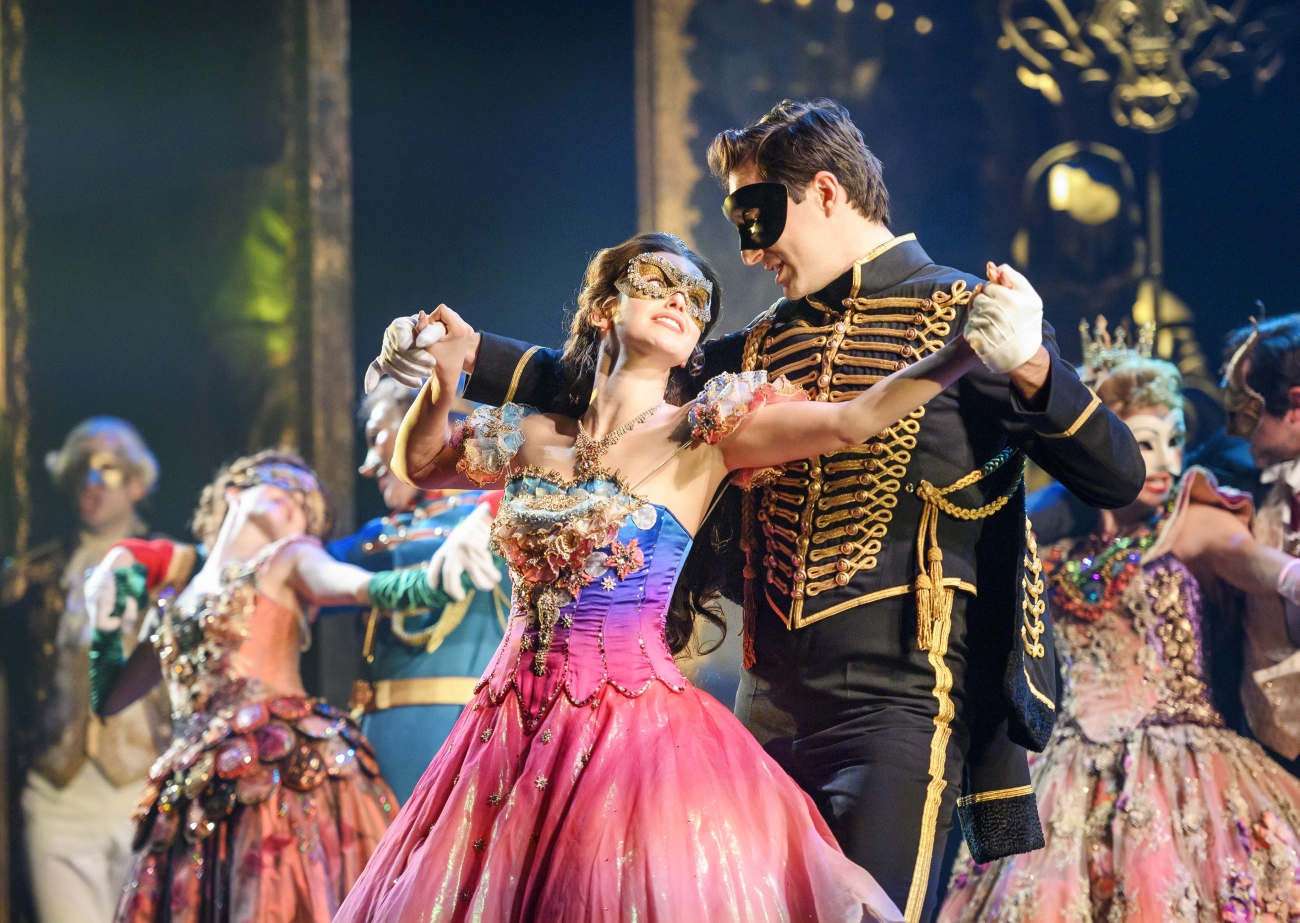
Nevertheless, we left the show with a twinge of sadness, thinking that this work, performed worldwide since its premiere nearly 40 years ago, has never been staged in France, particularly in Paris. Admittedly, everything was ready in 2016 to welcome the French version of Andrew Lloyd Webber’s masterpiece at the Théâtre Mogador, but an unfortunate incident—a fire in a technical room—damaged parts of the stage, preventing its debut in France.
So, when will The Phantom of the Opera finally be staged in France?
Christian Jarniat
6 June 2024
Traduction Cécile Day-Beaubié
